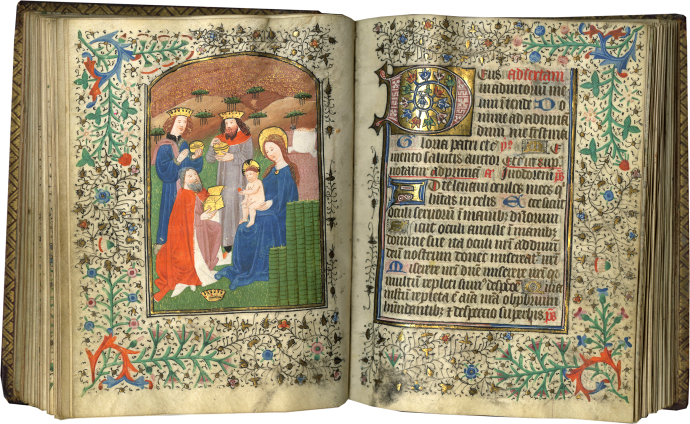


The Towneley Hours (use of Rome and Rouen)















The Towneley Hours (use of Rome and Rouen)

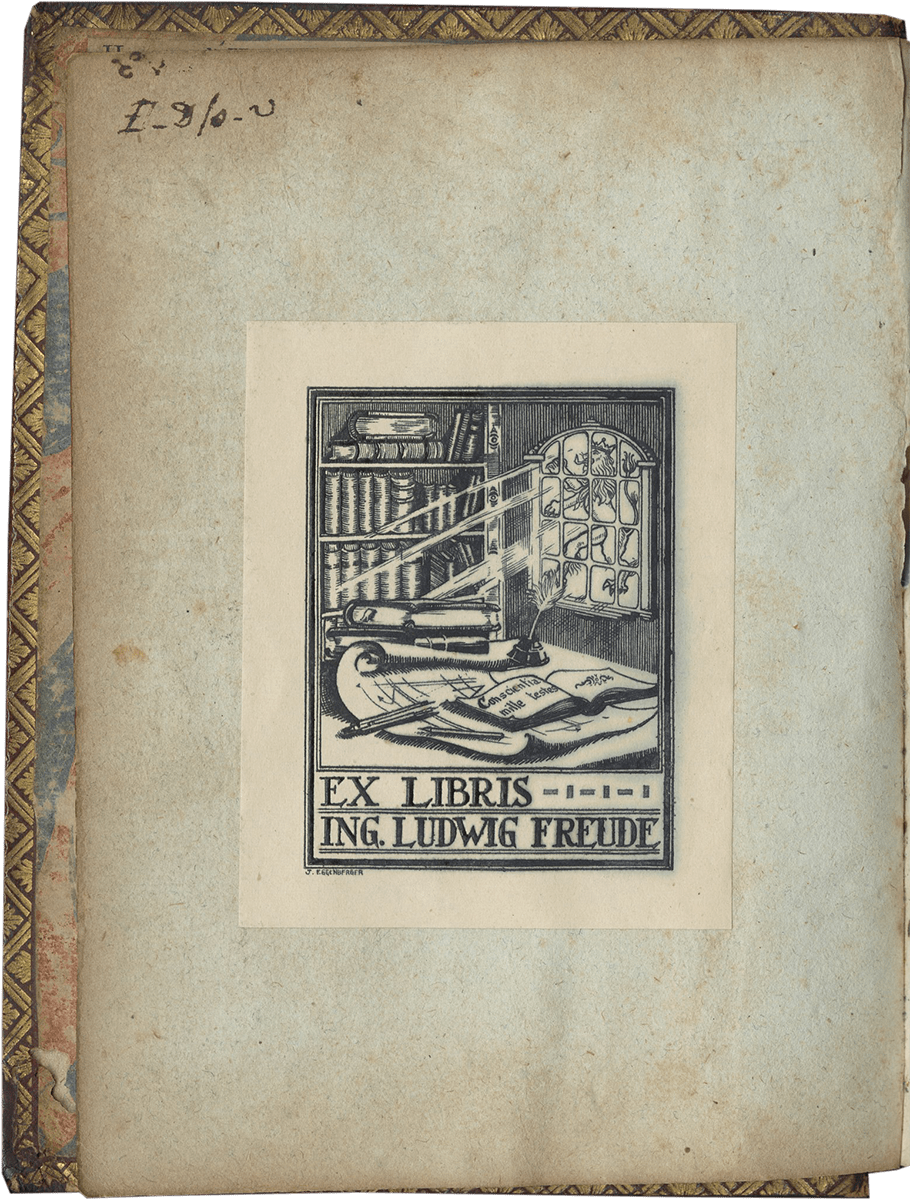

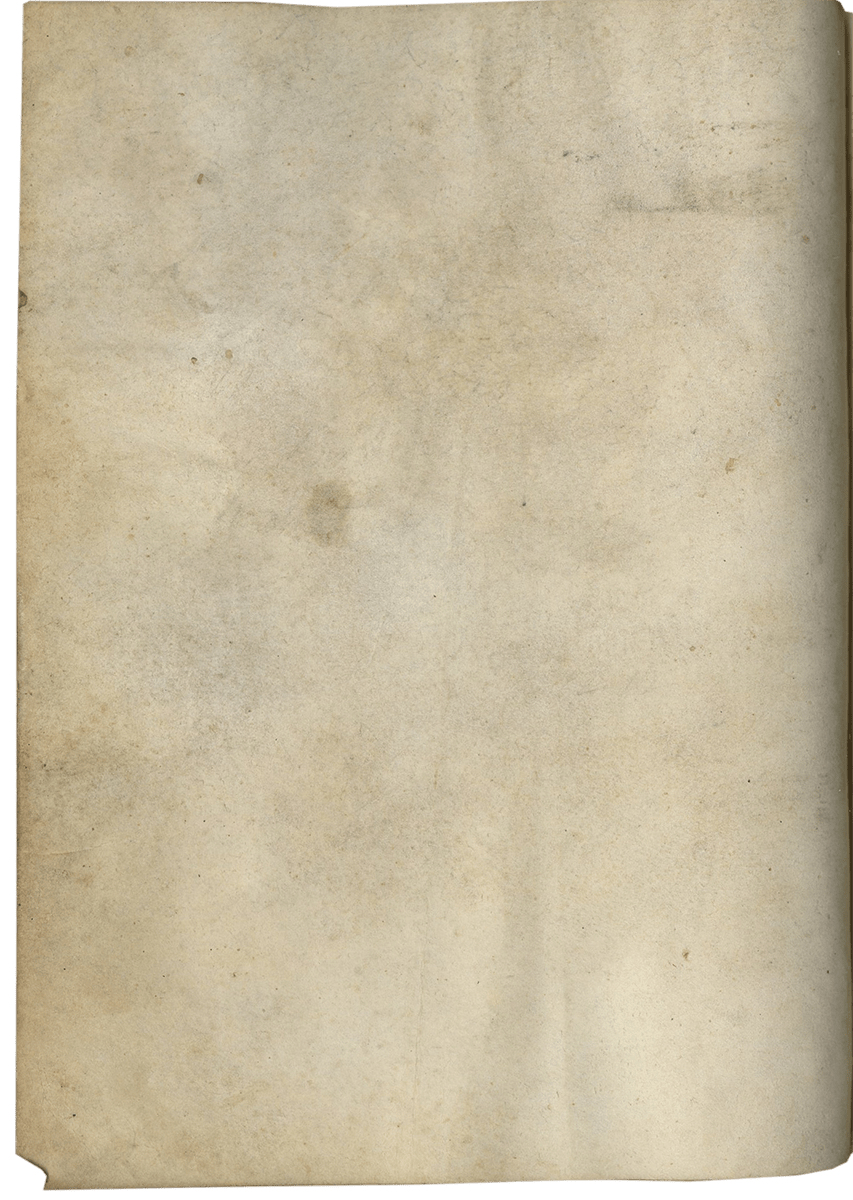
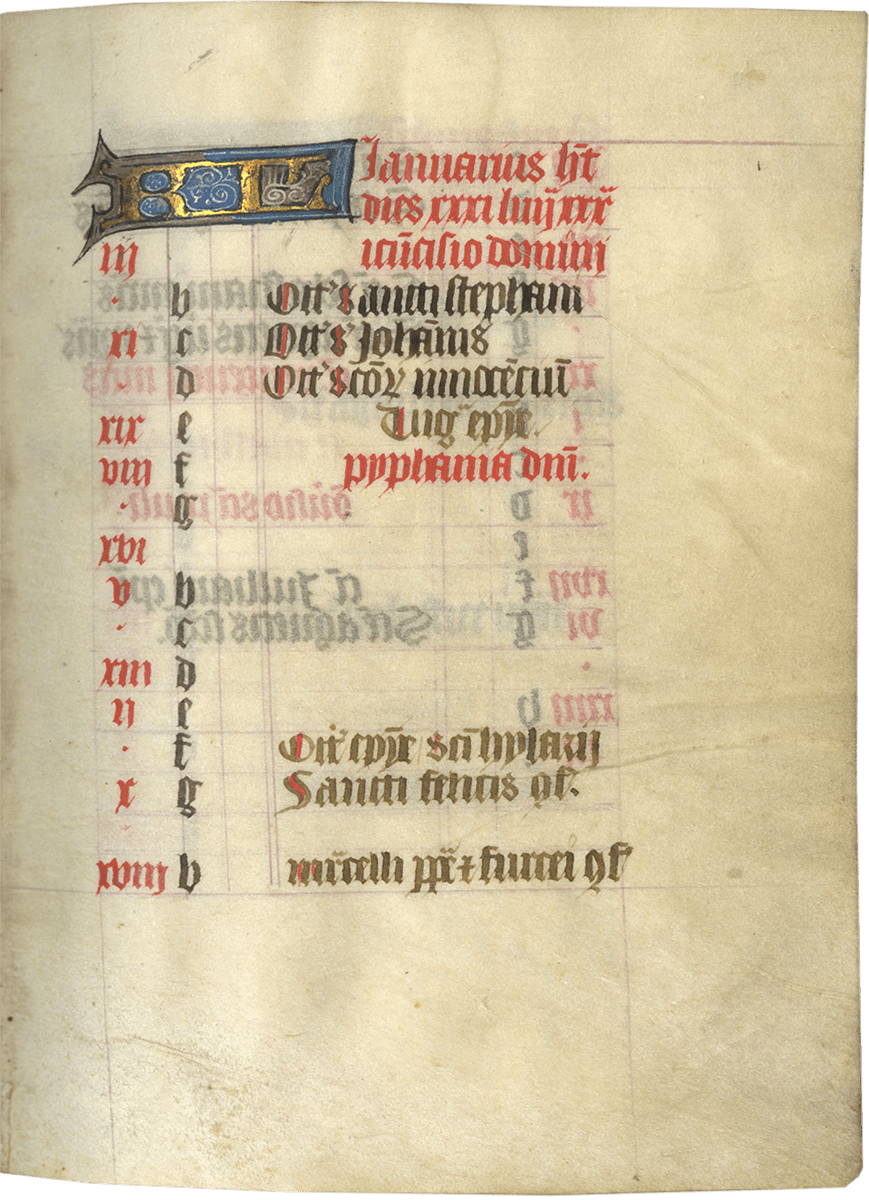

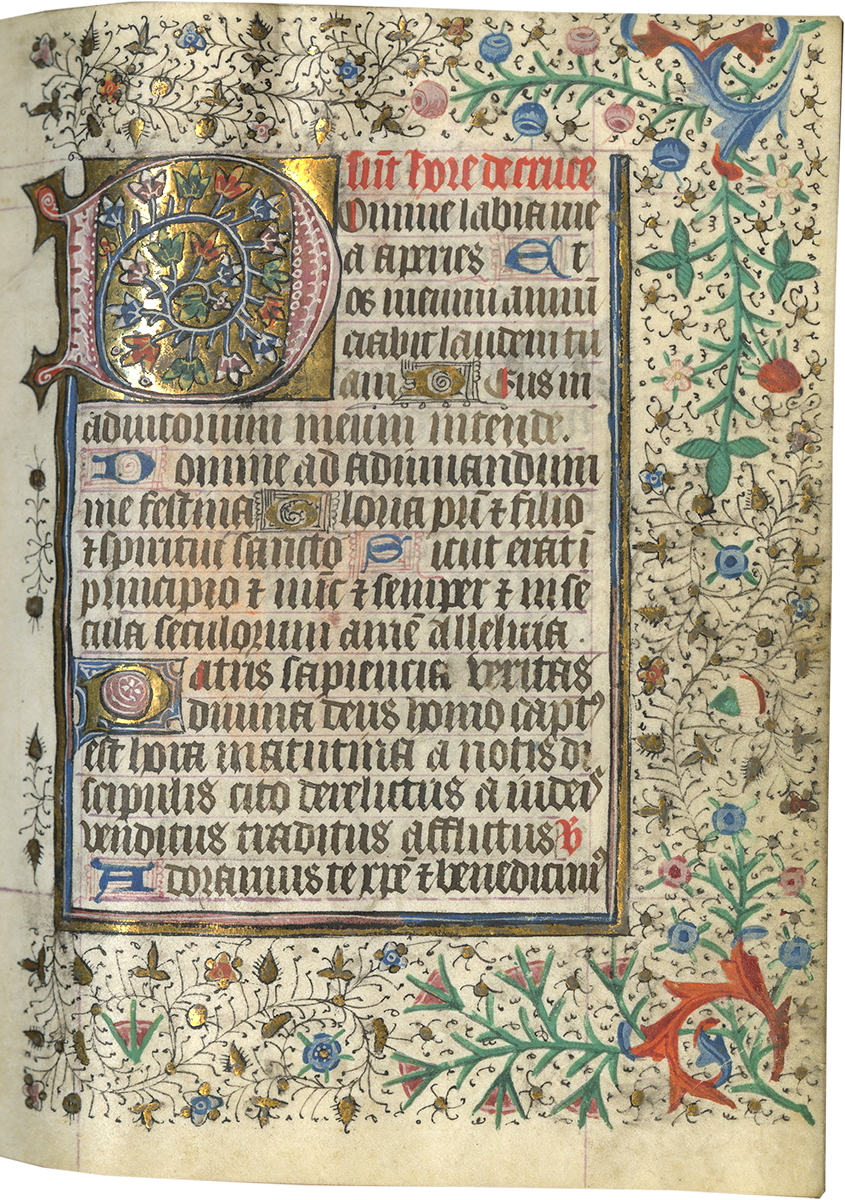
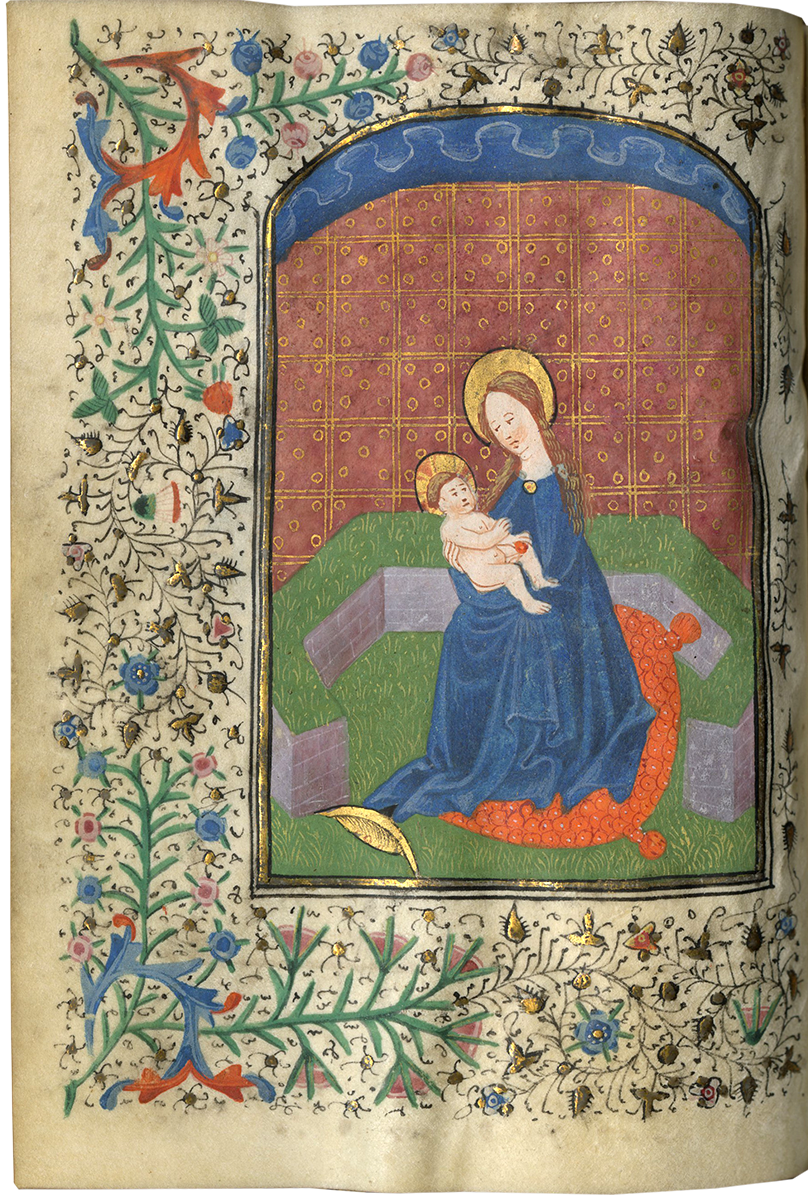
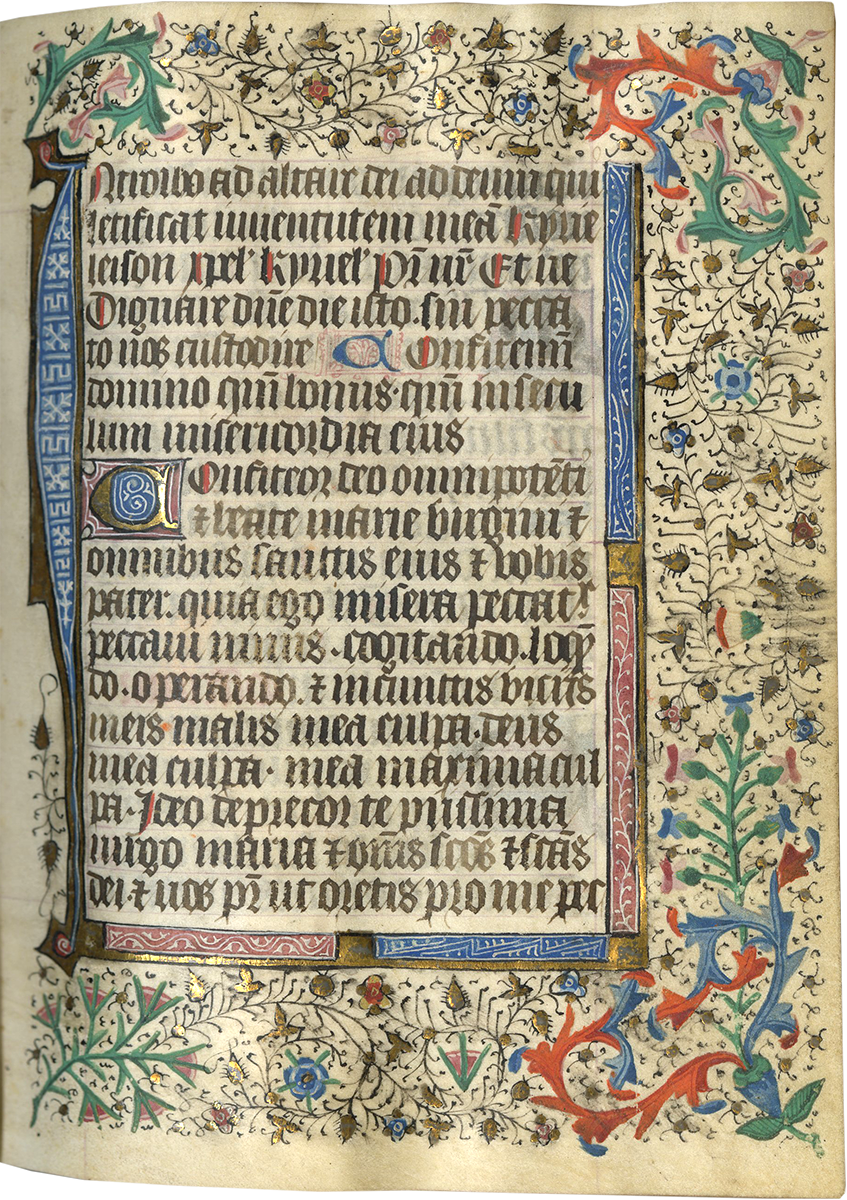
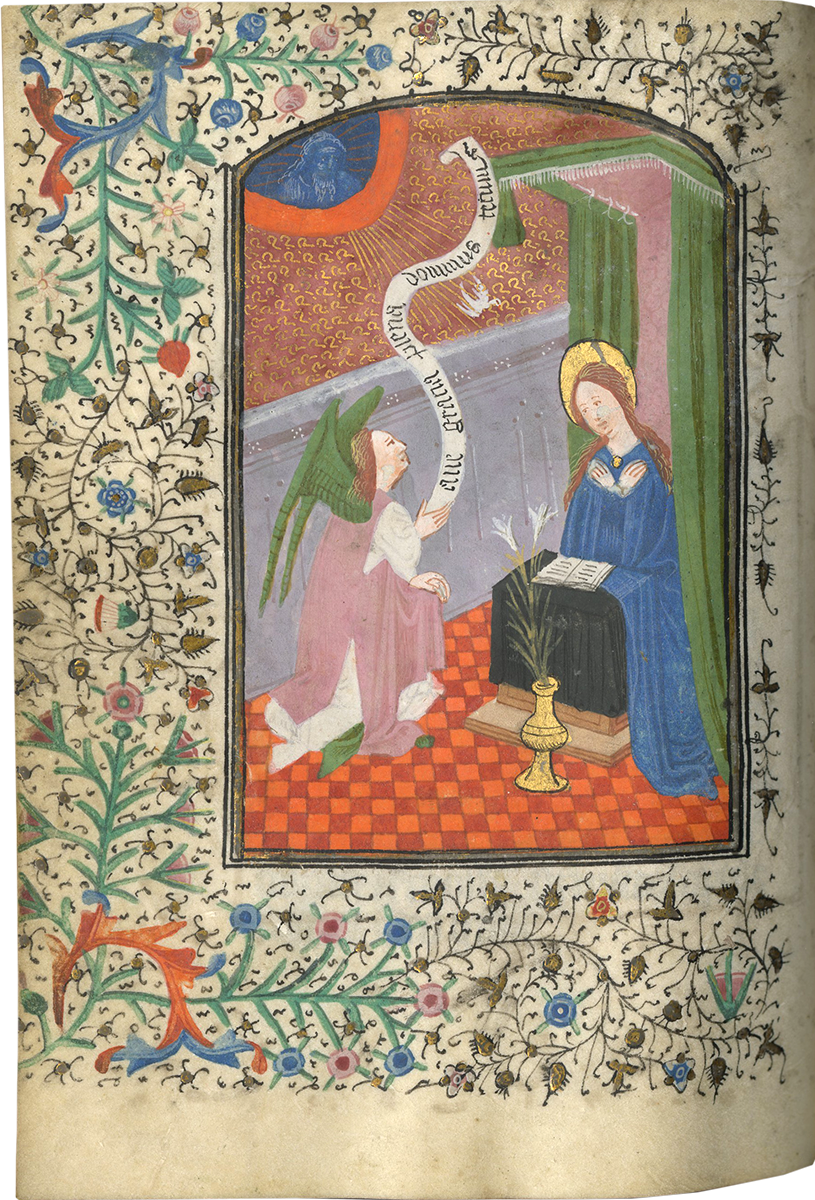

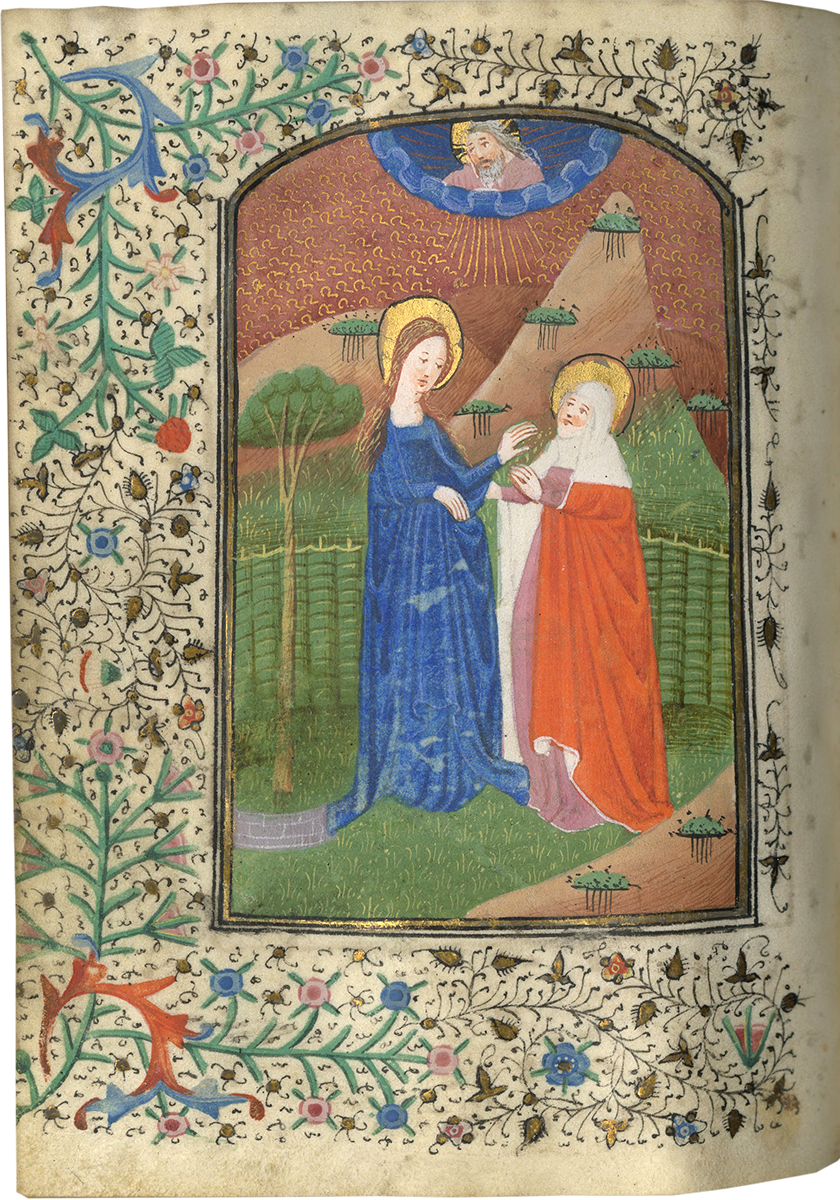
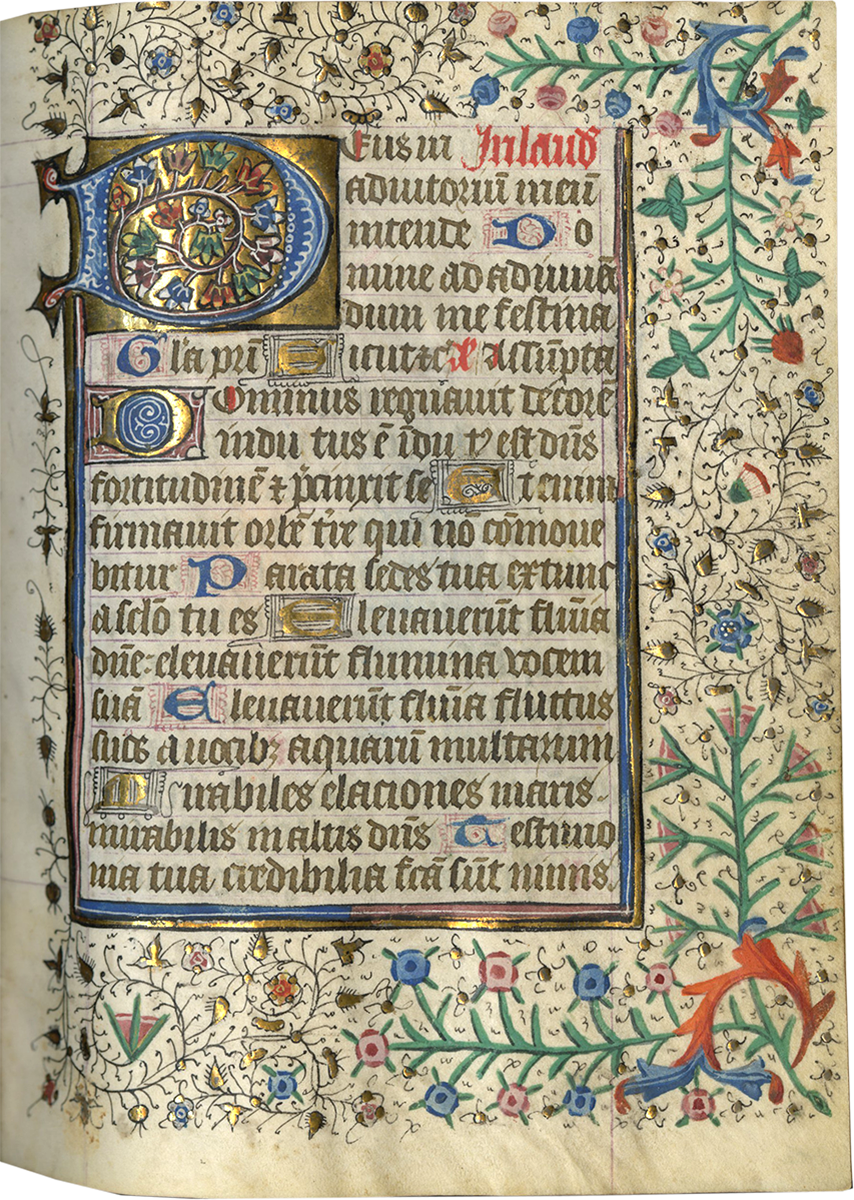
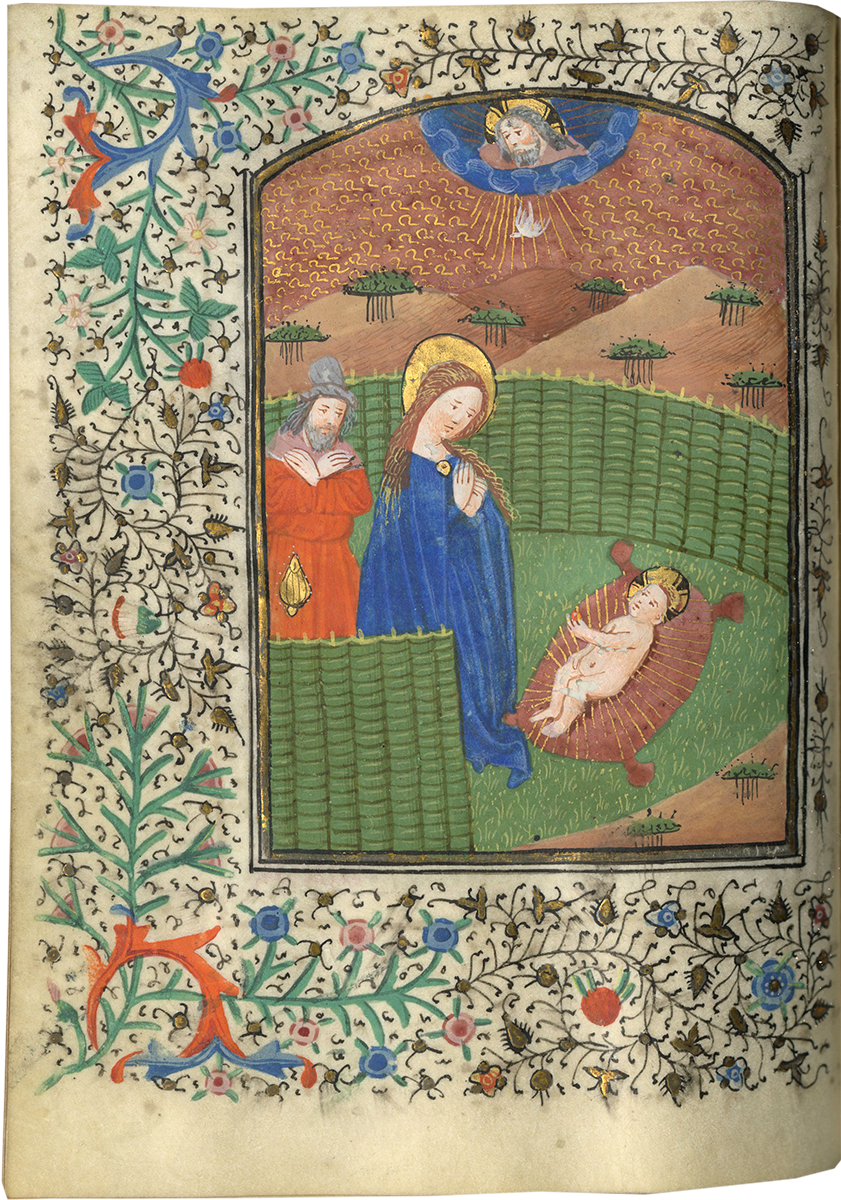
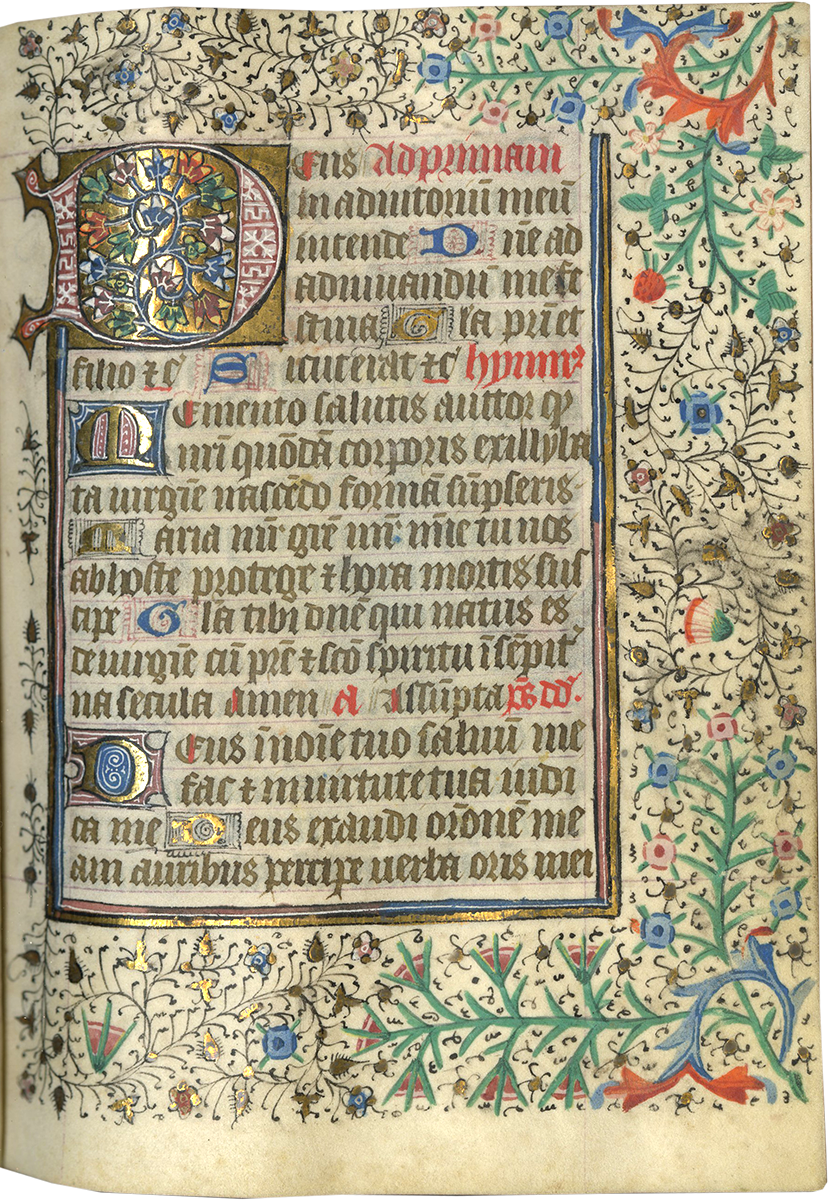
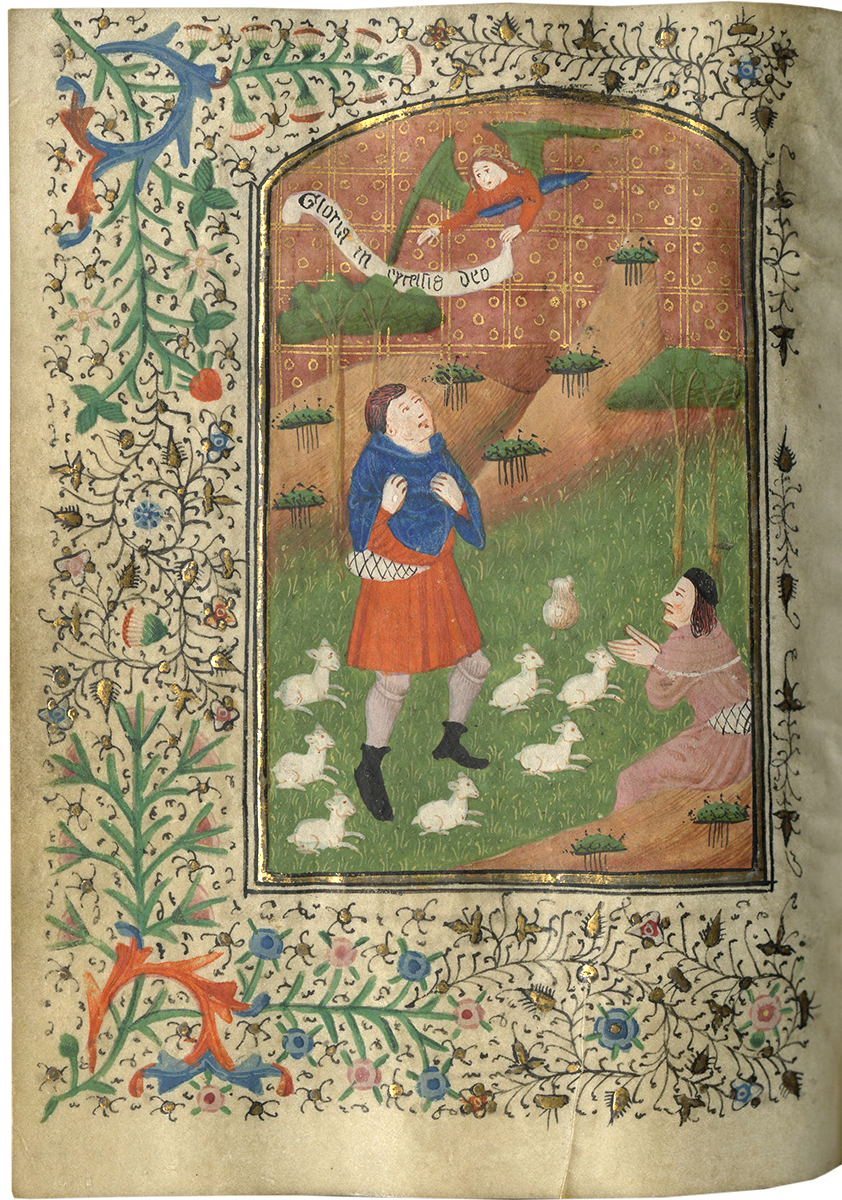

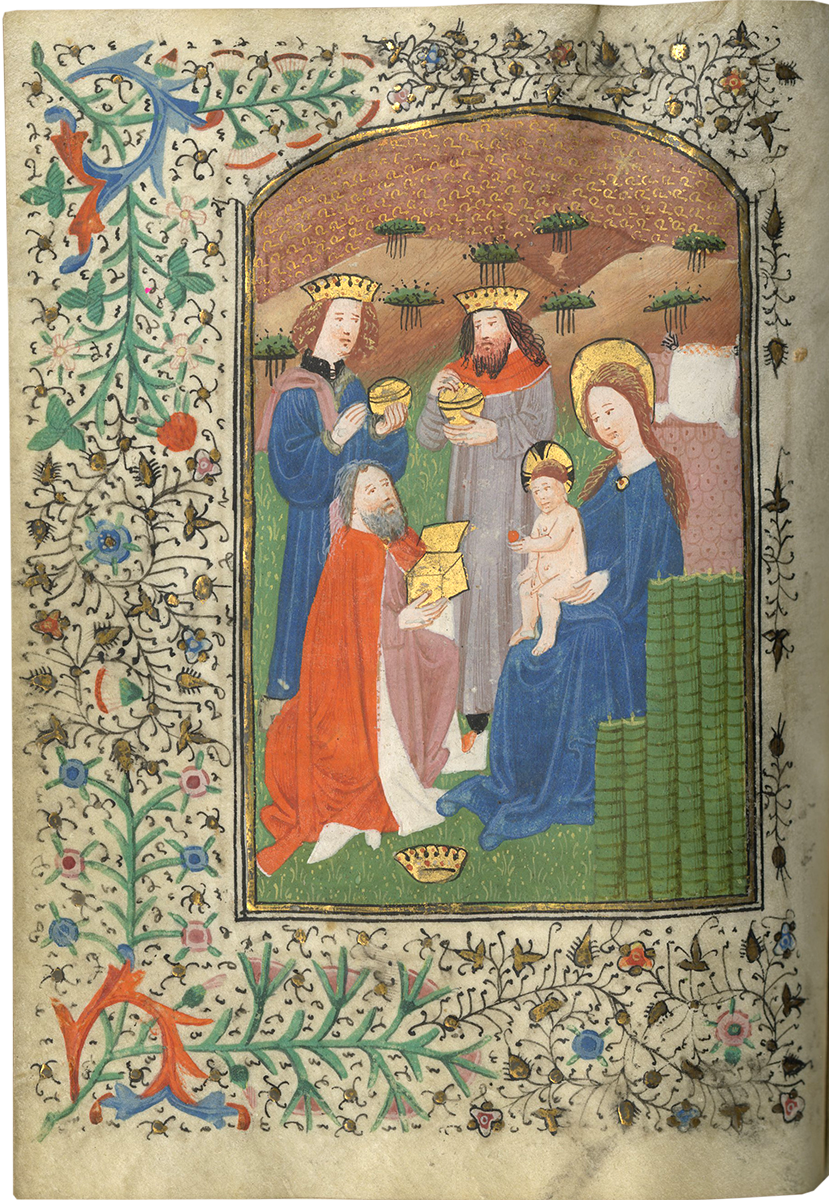
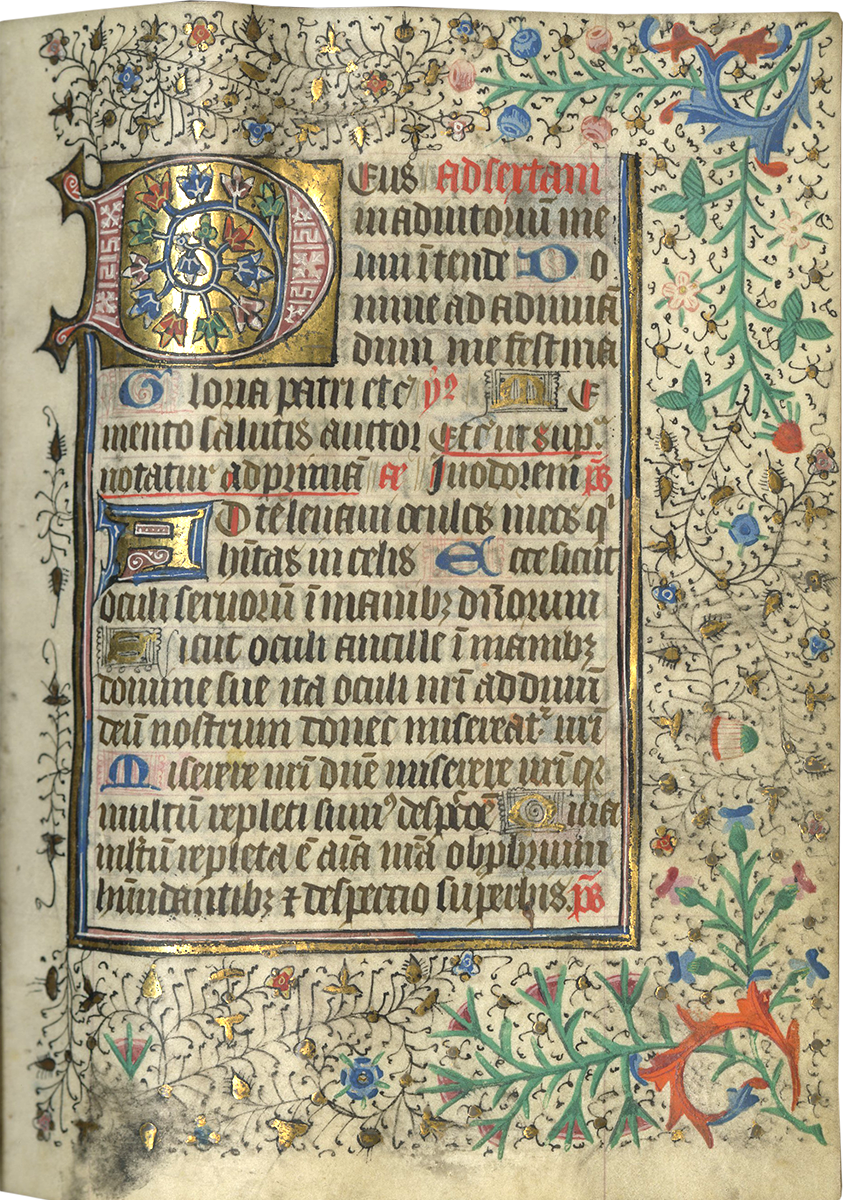
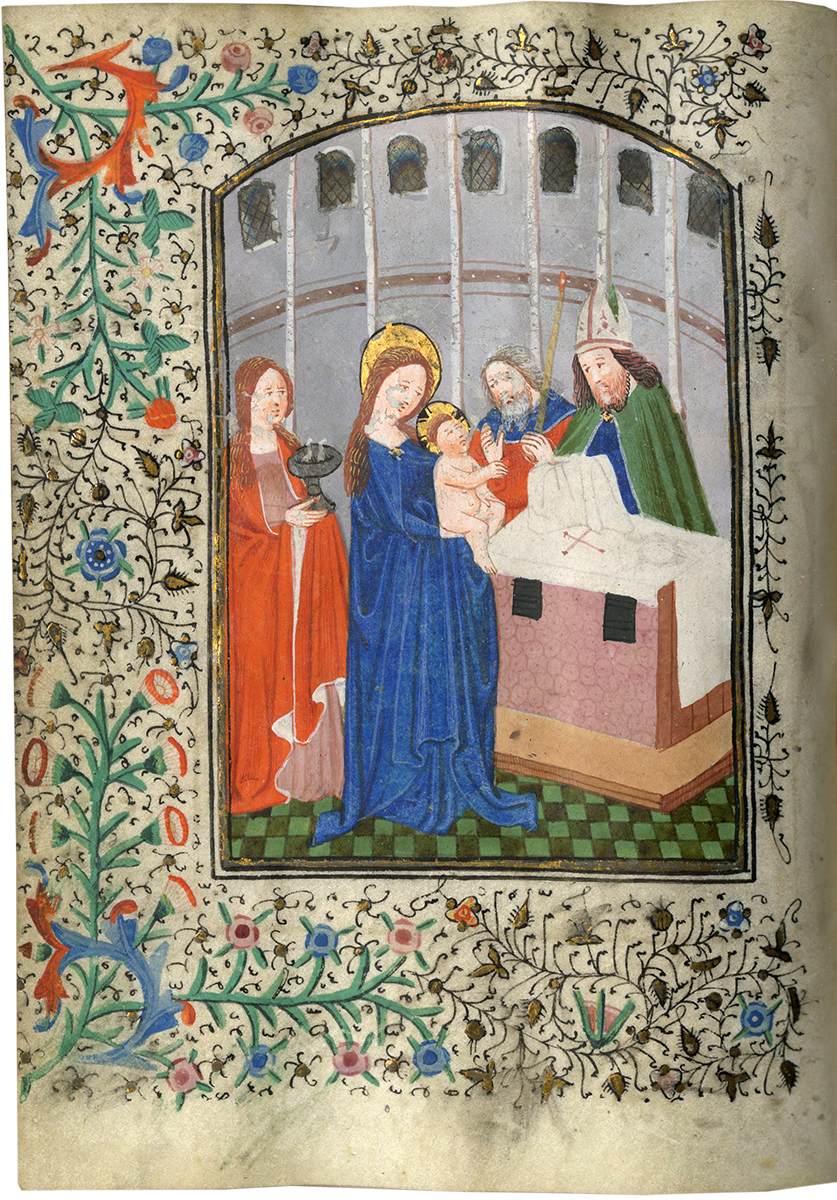
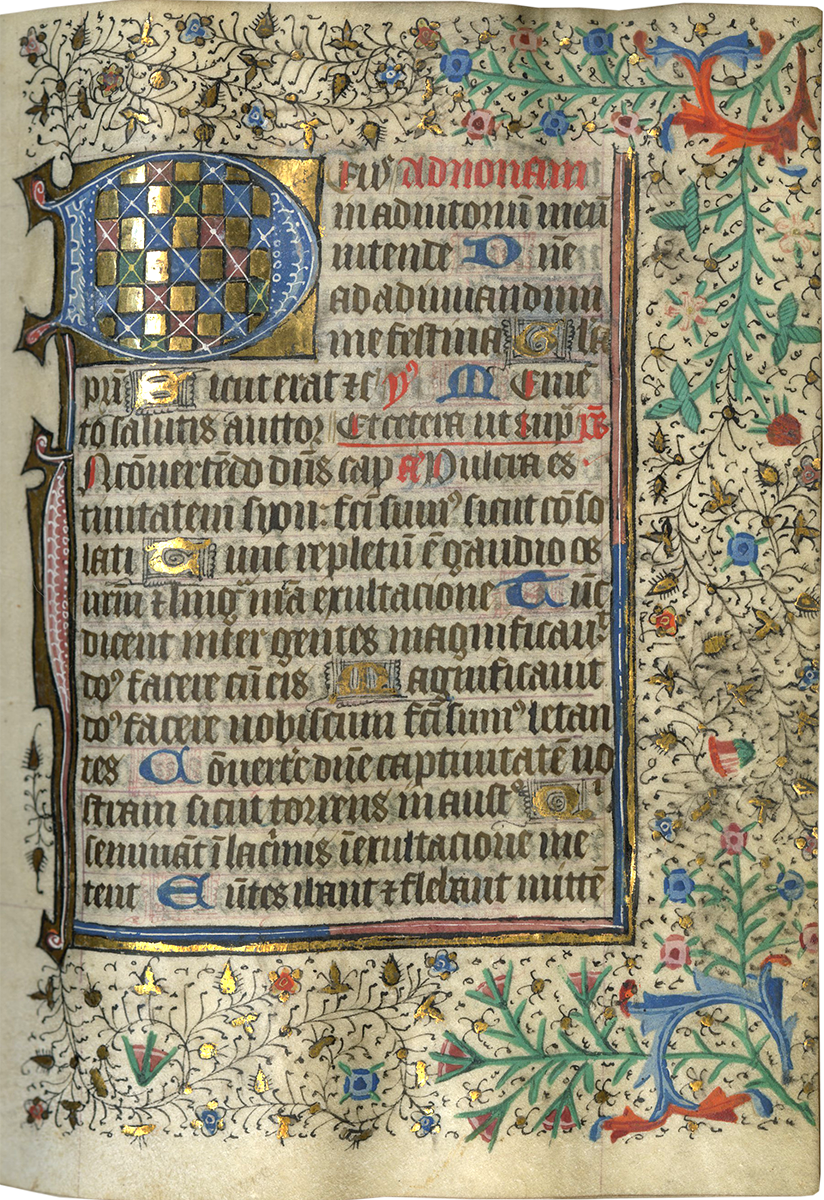
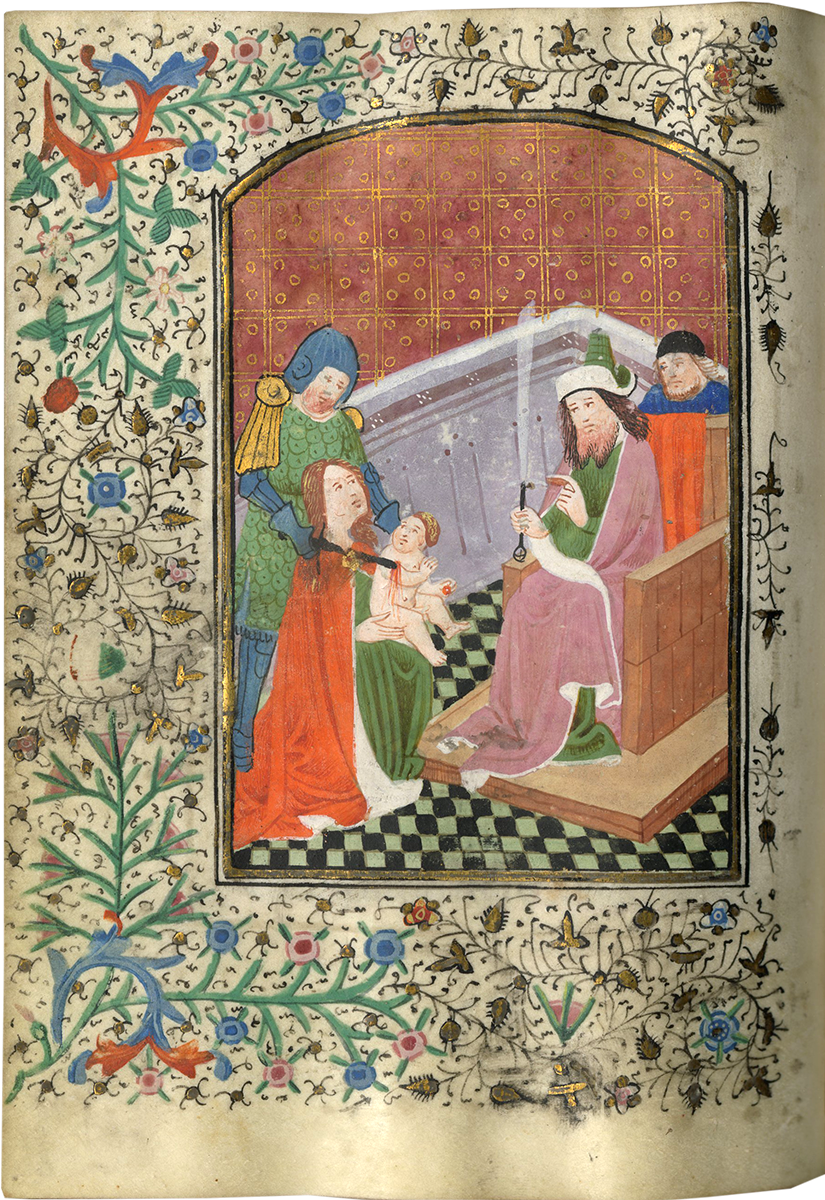
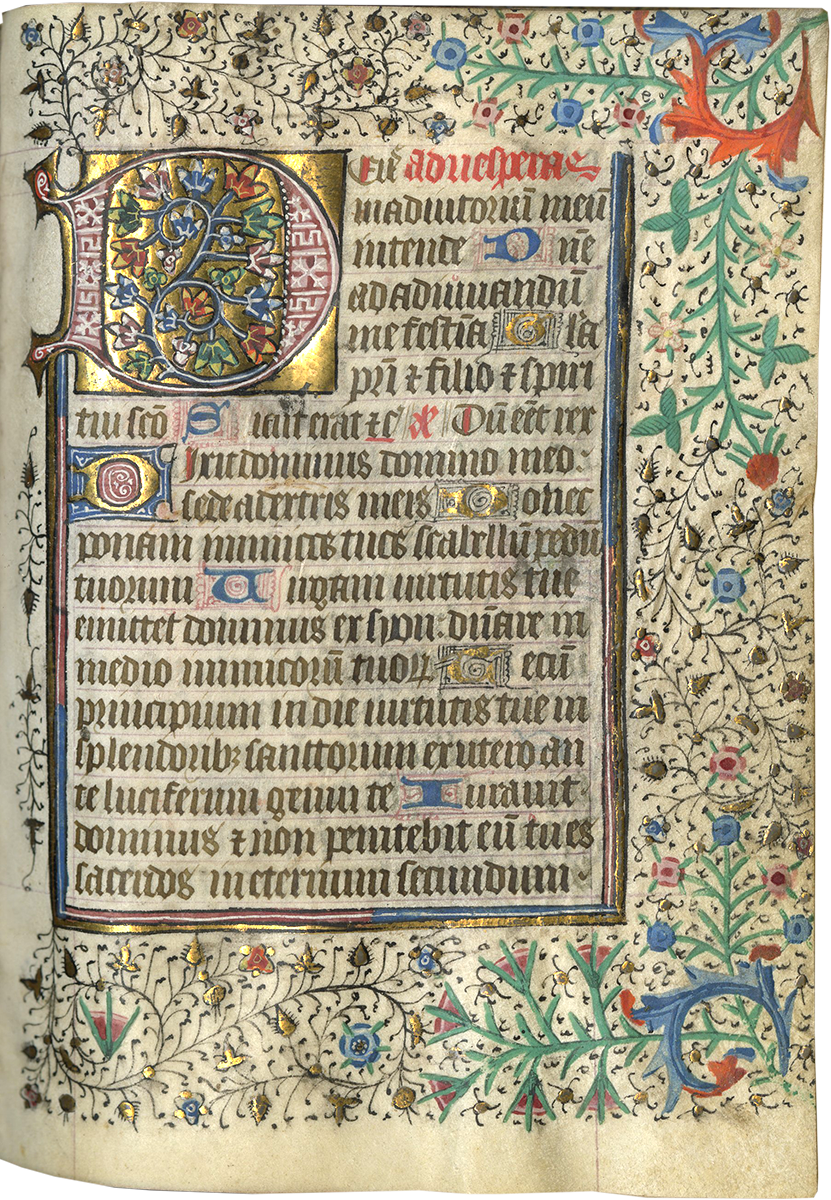
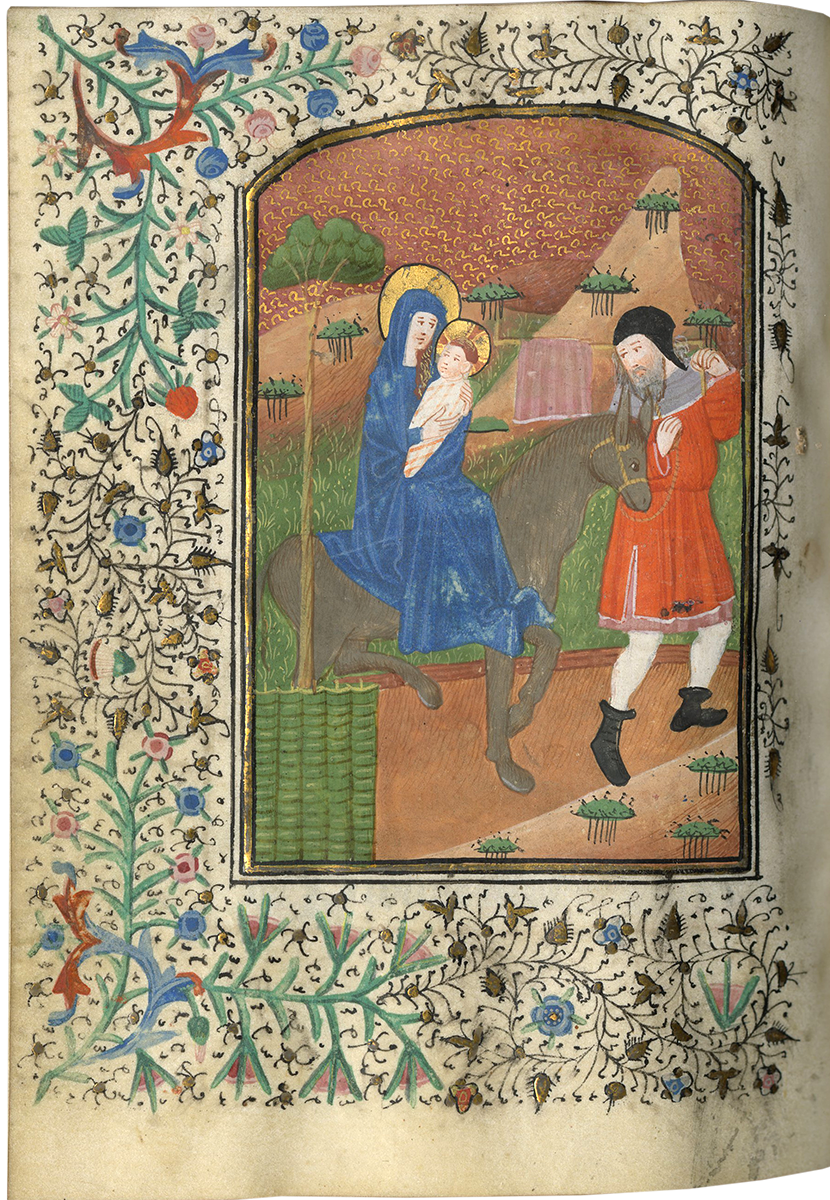


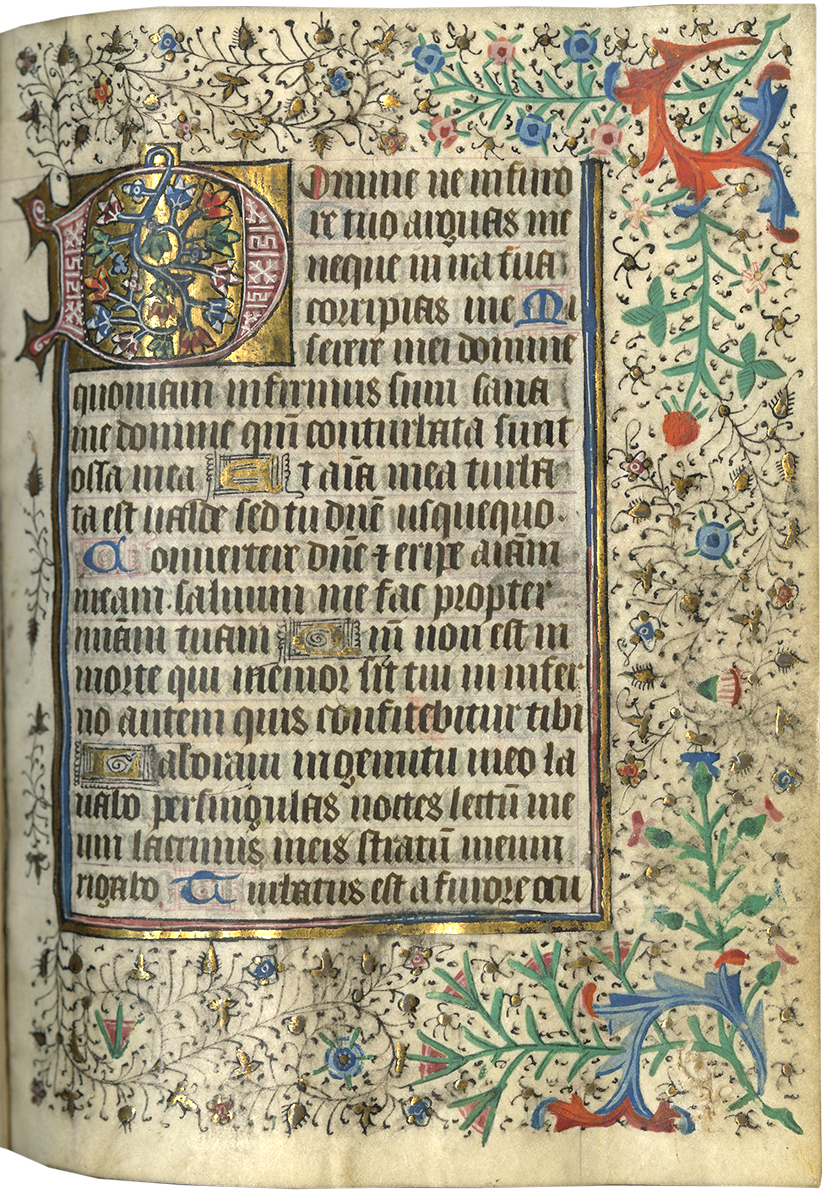
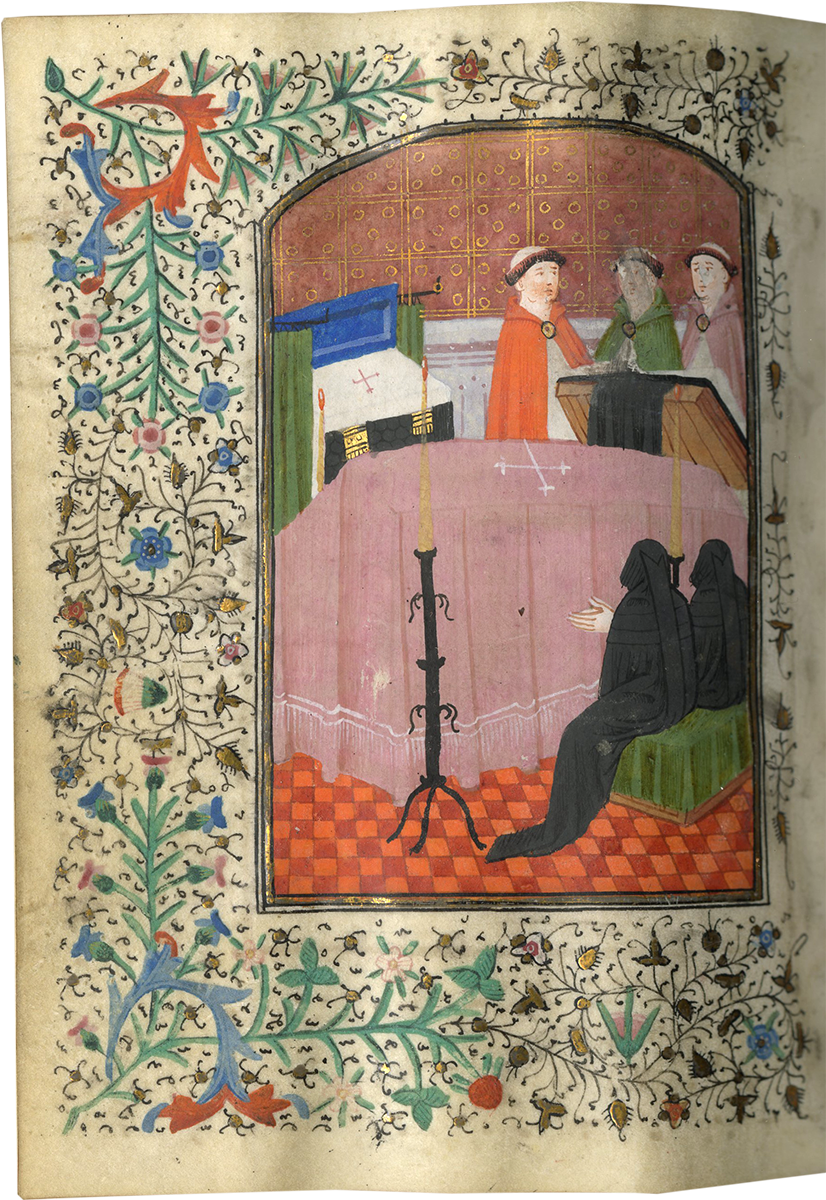
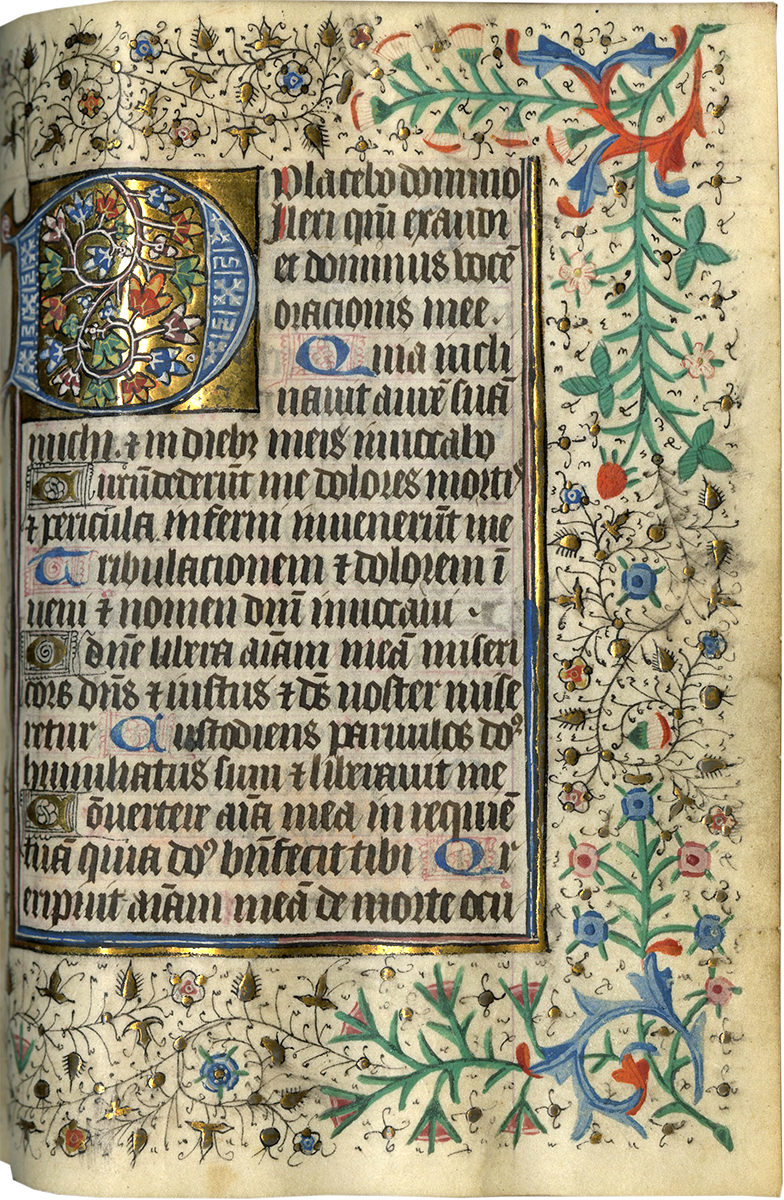
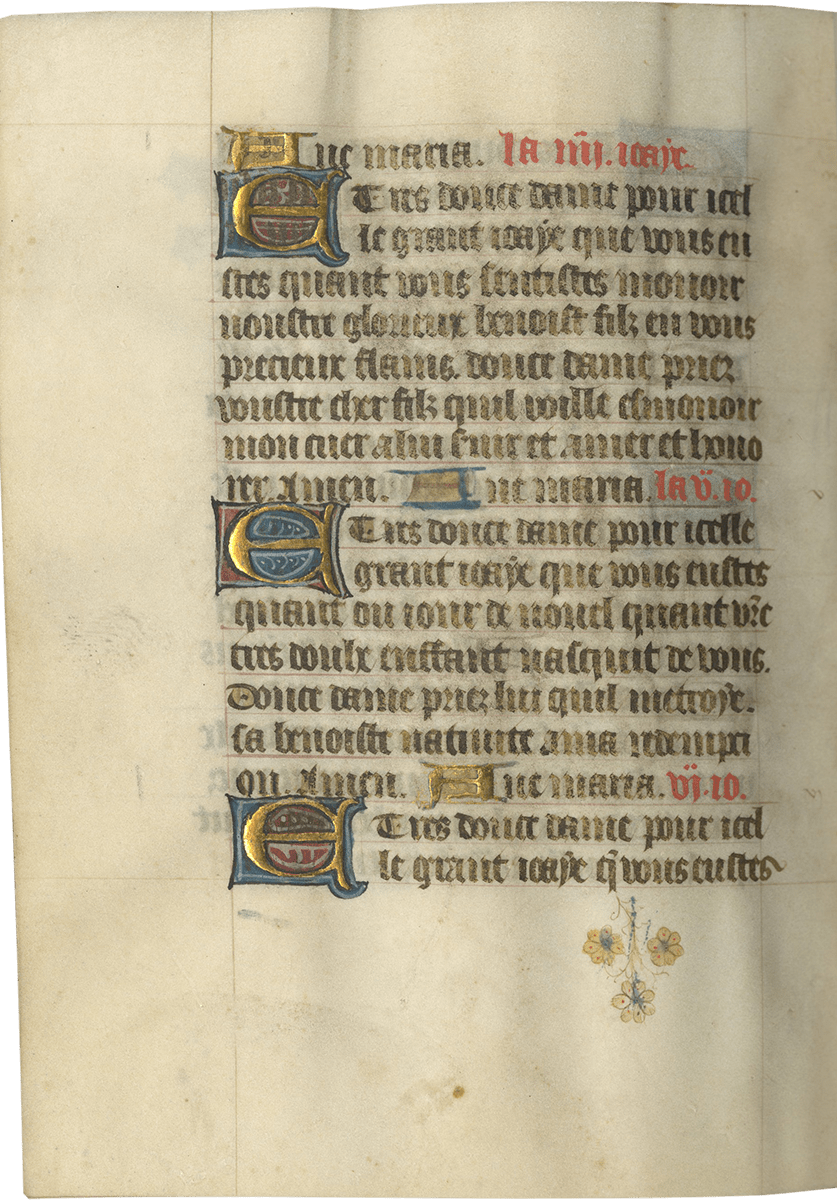
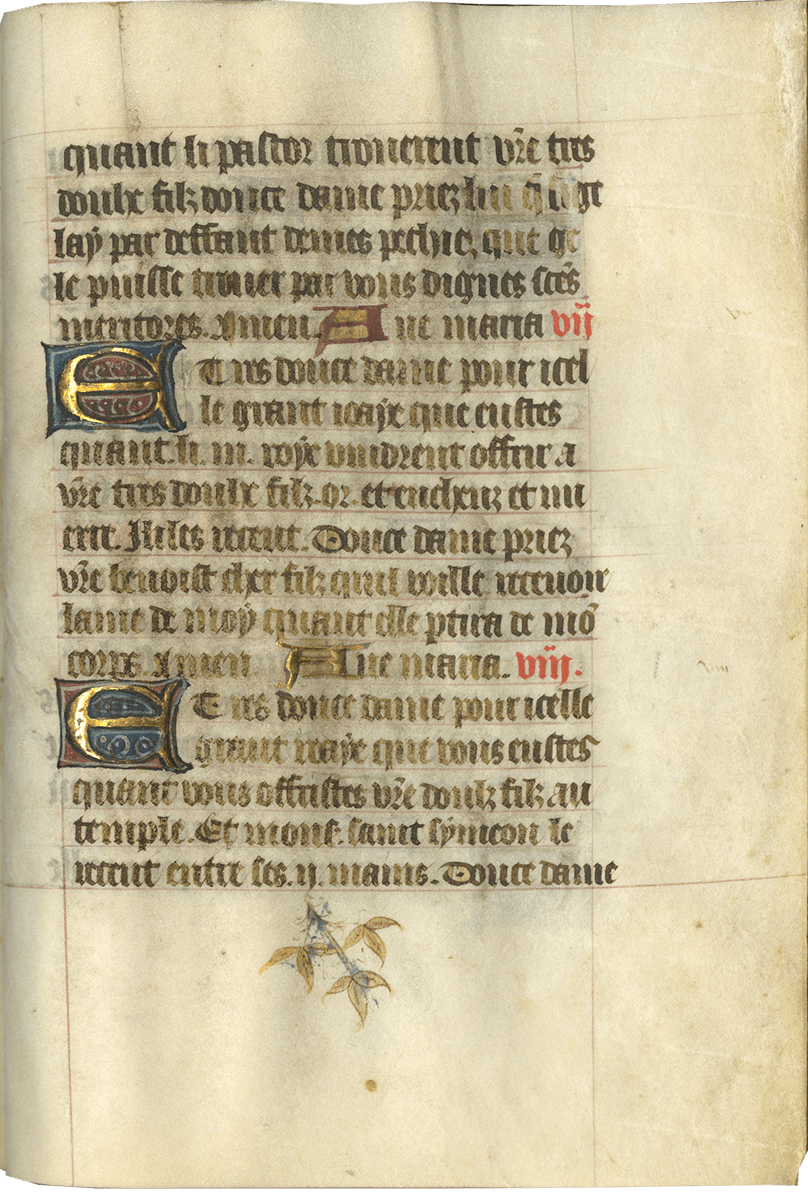
Description
This charming Book of Hours, full of delightful pictures that display Flemish realism of the period of Jan van Eyck in Bruges, was made for export for the French market. It is among the early works of the artist known for the liquid gold scrollwork in the background of his miniatures and bears comparison with important examples in institutional collections. Although its original owner (in Rouen?) is unknown, a string of noted bibliophiles dating over two centuries testifies to the interest it has held for discerning collectors. It takes its name – the Towneley Hours – from one such early owner.
iii + 133 + iii, parchment folios, misbound, some text leaves lacking and some replaced later in the century, written in formal Gothic script on 18 long lines (justification 105 x 69 mm.), 1-line initials with black penwork, 2- to 4-line initials on blue and pink grounds with white tracery throughout, 12 full-page miniatures with arched tops accompanied by full borders of acanthus leaves and flowers infilled with ivy-leaf stems, facing 5- to 6-line decorated initials on gold grounds within full borders, generally in very good condition throughout, a few minor instances of pigment flaking and a few stains to the miniatures, pilgrim badge removed on f. 78, certain of the text leaves faded in places. Bound in 19th-century red Morocco, scuffed at edges, most notably at spine ends. Dimensions 165 x 124mm.
Provenance
1. Written and illuminated in Bruges for the export market, with the Hours of the Virgin for the standard use of Rome and the Office of the Dead for the use of Rouen. The suffrages on later added leaves include St. Eutropia, sister of St. Nicasius and beheaded in Reims in the fifth century, and St. Fiacre, who established a hospice and hermitage in Meaux east of Paris. The miniatures are typical of the production of the Masters of the Gold Scrolls, active in Bruges from about 1415 to 1455 and thought to have been the foundation for the workshop of William Vrelant.
2. John Towneley (1731-1813), his bookplate inside the upper cover; likely lot 871 in the Towneley Sale by R. H. Evans, London, 8 June 1814. Towneley, bibliophile and heir of Charles Towneley, collector of classical antiquities, possessed an important manuscript collection, among where were the famous Towneley Homer, an eleventh-century Greek manuscript now in the British Library, and the well-known Towneley Mysteries, the single surviving manuscript of the Wakefield mystery plays now preserved in the Huntington Library in Pasadena, California.
3. Adam Sim of Coulter Mains, Scotland (1805-1868), antiquarian, his bookplate on the recto of the first flyleaf, along with text cut from a newspaper or another printed issue pasted onto the second flyleaf reading “ADAM SIM, Coulter, Saturday November 22, 1851.”
4. William Barclay David Donald Turnbull (1811-1863), attorney and antiquary, with a printed catalogue description pasted inside the upper cover with a pencil annotation identifying the present manuscript as having formed part of his library; his sale, 27 November 1863.
5. Ludwig Freude (1889-1956): ex-libris on the verso of the first flyleaf, a German-Argentine entrepreneur, who was the director of Banco Aleman Transatlantico (a subsidiary of Deutsche Bank) and one of the ten richest business people in Latin America in the 1940s.
Text
ff. 1-2, blanks;
ff. 3-14, Calendar;
ff. 16-19, Short Hours of the Cross;
ff. 21-23, Mass of the Virgin Mary;
ff. 23v-28, Gospel sequences;
ff. 78-81, Suffrages (opening incompletely, on replaced leaves);
ff. 82-83, ruled blanks;
ff. 85-97, Penitential Psalms and Litany;
ff. 98-100, Prayer O intemerata;
ff. 102-122, Office of the Dead (use of Rouen);
ff. 126-128, Suffrages (misbound, on replaced leaves);
ff. 128v-133, Fifteen Joys of the Virgin, in French (on replaced leaves).
Illustration
The subjects of the miniatures are as follows:
f. 15v, Crucifixion;
f. 20v, Virgin and Child;
f. 29v, Annunciation;
f. 42v, Visitation;
f. 50v, Nativity;
f. 54v, Annunciation to the Shepherds;
f. 57v, Adoration of the Magi;
f. 60v, Presentation in the Temple;
f. 63v, Massacre of the Innocents;
f. 68v, Flight into Egypt;
f. 84v, Last Judgement;
f. 101v, Funeral Mass.
This charming Book of Hours, held easily in the hand, is an excellent example of Netherlandish realism contemporary with the career of the great Jan van Eyck (1390-1441). Echoes of Eyckian realism occur in the miniature of the Virgin and Child (f. 20) and in the rustic landscape of the Annunciation to the Shepherds (f. 54v). The Masters of the Gold Scrolls – the artist, or more likely artists, responsible of the Towneley Hours – were active roughly contemporary with Jan van Eyck and primarily in his hometown, Bruges. They take their name from the elaborate decorative backgrounds of liquid-gold scrollwork on pinkish-red grounds. The earliest works by artists of this group date to the 1410s and owe much to the so-called pre-Eyckian illuminators, and they continued to be active in the post-Eyckian decades into the 1450s. It is thought that Willim Vrelant, who arrived in Bruges from Utrecht in 1451, took over their workshop. Many of their manuscripts were produced for export, often to London, where Bruges had ties through the wool trade, but also to France, as in the present example.
Friedrich Winkler first identified the Gold Scrolls Master in 1925. Later it was recognized that many hands worked in this style and the name was changed to the Gold Scroll Masters. By 2016, Gregory Clark had identified 140 manuscripts, mainly Books of Hours, in the style of the Gold Scrolls Masters, illustrating their immense popularity in the second quarter of the fifteenth century in the Southern Netherlands (see Clark 2018).
The same artist who illuminated the Towneley Hours also painted the Annunciation miniature in a slightly later Book of Hours in Liège (Bibl. de l’Université, Ms. Wittert 17; the miniature on f. 52, see Demolder 2020), while the borders, which combine a mixture of pen-and-ink rinceaux with spiny acanthus sprigs confined to the corners, are found in early Gold Scrolls manuscripts such the Book of Hours held at Stonyhurst College (MS 35; see Luyster 2006). Figs. 1 and 2. The present manuscript dates early in the style of the Masters of the Gold Scrolls, probably in the 1420s, and in this respect compares with a richly illuminated Book of Hours in The Hague (Museum Meermanno, MS MMW 10 F 11). Figs. 3 and 4.
We thank Gregory Clark for his expertise.
Literature
Bousmanne, Bernard and Theirry Delcourt, eds. Miniatures Flamandes, 1404-1482, Paris, 2011.
Cardon, Bert. “The Illustrations and the Gold Scrolls Workshop,” in Typologische Taferelen uit het Leven van Jezus: A Manuscript from the Gold Scrolls Group (Bruges, Ca. 1440) in the Pierpont Morgan Library, New York, Ms. Morgan 649, eds. B. Cardon, R. Lievens and M. Smeyers, Louvain, 1985, pp. 119-204.
Clark, G. “Mass production: The Masters of the Gold Scrolls,” Splendour of the Burgundian Netherlands, eds. As-Vijvers, A. M. W. and A. S. Korteweg, Utrecht, Zwolle, and The Hague, 2018, pp. 96-109.
Delaissé, L. La miniature flamande, Brussels, 1950.
Demolder, Juliette. Autour du Ms. Wittert 17: étude monographique d’un livre d’heures conservé à la Bibliothèque Universitaire de Liège. Mémoire de master en Histoire de l'art. Liège, Université de Liège, 2020, 2 vol.
Dogaer, G. Flemish Miniature Painting in the Fifteenth and Sixteenth Centuries, Amsterdam, 1987, pp. 27-31.
Hans-Collas, I. “Les Maîtres aux rinceaux d’or,” in Miniature flamandes, 1404-1482, eds. B. Bousmanne and T. Delcourt, Paris and Brussels, 2011, pp. 140-147.
Luyster, Amanda. “Books of Hours of the Gold Scrolls Group, England, and Internationalism in the Fifteenth Century,” in Catholic Collecting, Catholic Reflection 1538-1850, ed. Virginia Chieffo Raguin, pp. 89-101 (exh. cat.), Worcester, MA, College of the Holy Cross, 2006.
McKendrick, Scot. Flemish Illuminated Manuscripts 1400-1550, London, 2003.
Smeyers, Maurits. L’Art de la miniature flamande, VIIIe aux siècle, Tournai, 1998, pp. 234-236.
Winkler, Friedrich. Die Flämische Buchmalerei des XV und XVI Jahrhunderts: Künstler und Werke von den Brüdern van Eyck bis zu Simon Bening, Leipzig, 1925.
Online Resources
Digital Images of Liege, Bibl. de l’Univ., MS Wittert 17 https://donum.uliege.be/handle/2268.1/1535
Virtual exhibition “Miniatures flamandes, 1404-1482” (BNF, KBR, 2011) http://expositions.bnf.fr/flamands/index.htm